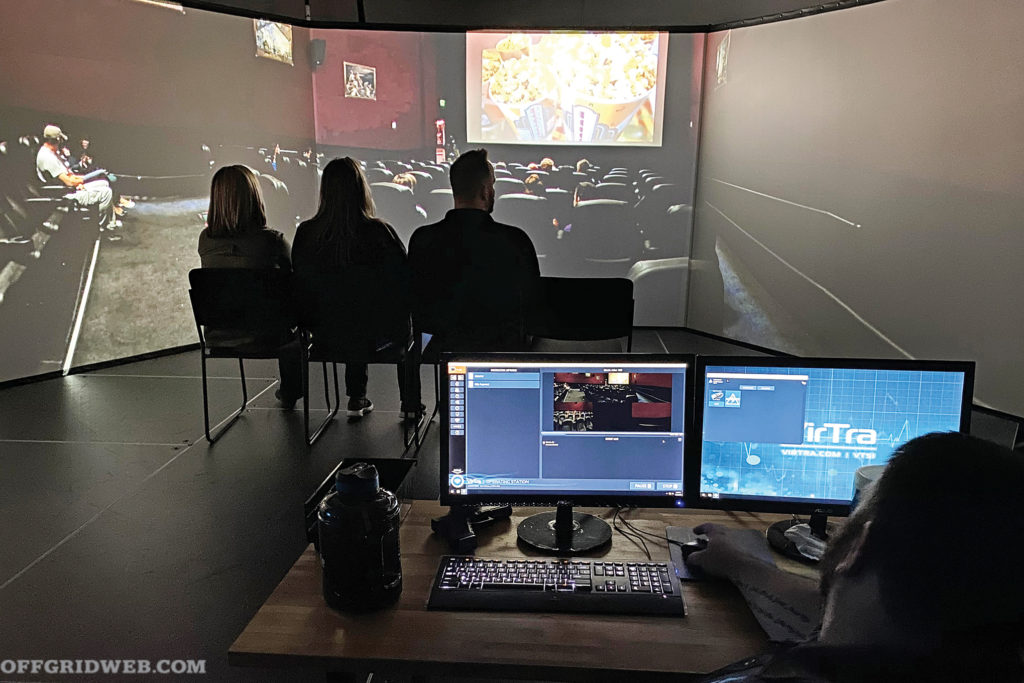RECOIL OFFGRID Preparation Judgement Day: Guardian Training and Consulting
Knowing how to shoot has obvious value. If your fundamentals are solid, you’ll be able to quickly and reliably put rounds where they need to go. But that’s only one piece of the puzzle — it’s also critical to know when to shoot. Missing a shot might have serious consequences, but shooting someone without adequate justification (or hesitating to shoot when you need to) is guaranteed to be a life-altering event. In order to hone my judgment, I connected with Josh and Karen Logan, the owners of Guardian Training and Consulting.
At the time I connected with Guardian, the company was sometimes hosting classes at the Scottsdale, Arizona, headquarters of Haley Strategic. While Haley’s courses are tailored to experienced shooters, Guardian offers a varied and affordable curriculum to a broader audience, and provides an abundance of one-on-one feedback.
I began by attending Guardian’s half-day Arizona CCW class — I already have a permit, so this served as a refresher on state laws regarding use of deadly force. Logan and his instructors did a good job explaining the legalese and its practical implications. I’d recommend everyone take similar classes periodically, since knowledge of the law will provide a foundation for your decisions in any self-defense situation.
Next, I attended another half-day Guardian class called Pistol Fundamentals and Judgmental Use of Force. This class covered both the how and the when mentioned above. It began with a segment on the nuts and bolts of shooting a handgun — stance, grip, sight picture, and trigger press. The students, several of whom were new gun owners, practiced these principles in front of Haley’s VirTra 100 simulator screen. The CO2-powered, laser-equipped VirTra pistols showed any flaws in our technique, and Guardian instructors provided feedback based on our shot groups.

The other half of this class focused on combining these fundamentals with good judgment. We stepped into the wraparound VirTra 300 simulator and prepared to do some on-the-fly problem-solving. Instructors reminded us that, just like real life, not every scenario would require us to discharge a weapon.
The first scenario I faced involved the theft of an ATV from a barn on my property. As I approached to investigate, the culprits were revealed to be two young teenagers. One hesitantly brandished a knife but dropped it and retreated when I drew my gun. The second teen drew a gun of his own, so I fired three rounds, ending the threat. I was able to justify my actions when Guardian instructors asked probing questions, much like investigators and lawyers would in the aftermath of a real shooting.
Our second scenario took place in a crowded movie theater. As we waited for the previews, I noticed the emergency exit door was cracked. This seemed unusual, but I knew something was wrong when a man stepped through wearing a gas mask and tactical vest. I couldn’t see a weapon at first, so I waited to draw until I could clearly make out a shotgun in his hands. I drew and fired five rounds; he staggered but returned fire, so I kept shooting until he fell. This reinforced the fact that judgment isn’t only necessary before the first shot — it’s a continuous process of assessment.
These courses from Guardian Training and Consulting helped me develop more confidence in my ability to react to an unfolding situation, and reinforced the tremendous importance of judgment in any use-of-force scenario. For more information on future classes, go to gtctrain.org or follow @gtctrain on Instagram.
 STAY SAFE: Download a Free copy of the OFFGRID Outbreak Issue
STAY SAFE: Download a Free copy of the OFFGRID Outbreak Issue
No Comments